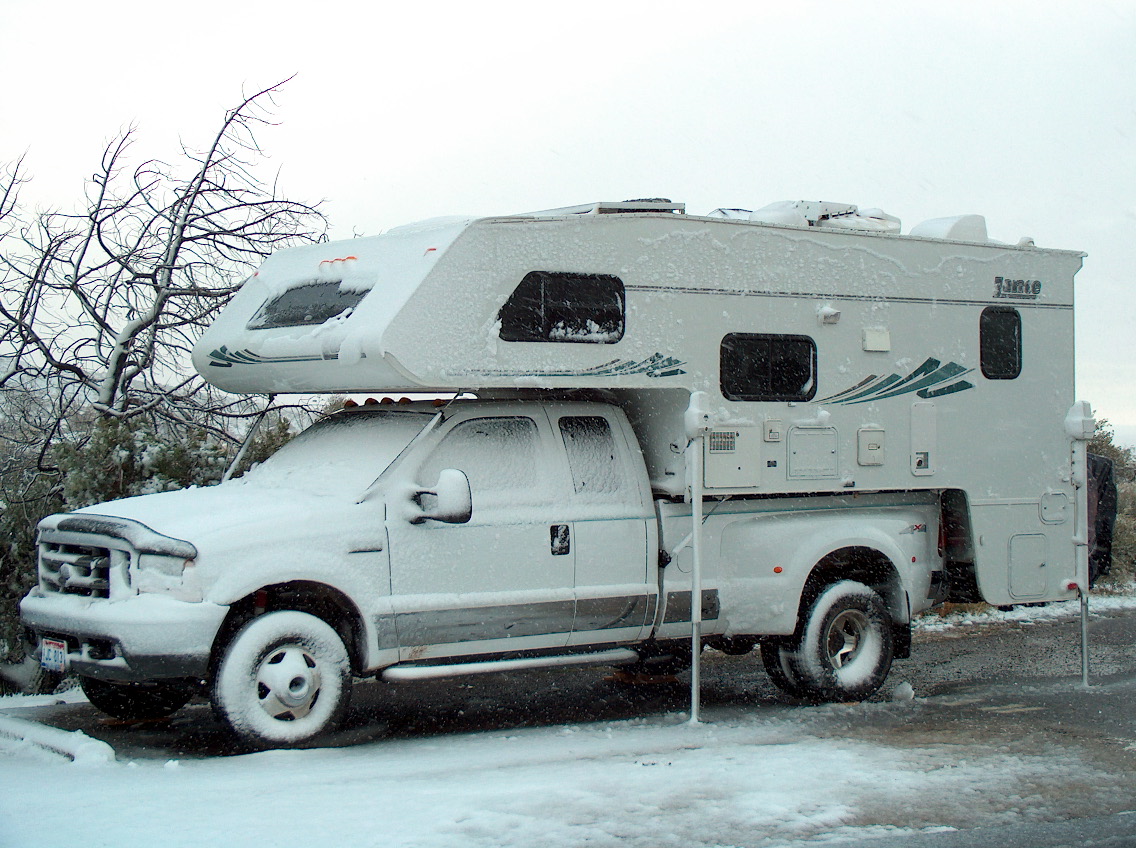 Winter isn’t too far off, and some places around the country have already seen their first snow. Unless you are traveling through the winter or re-locating to a warmer area, you should be thinking about winterizing your RV. Of course, the main aspect of that is prepping the plumbing system. Many RVers run antifreeze through the plumbing system or blow out all the water from the lines using an air compressor. While this is important, here are some other things to keep in mind when getting your rig ready for the cold winter months.
Winter isn’t too far off, and some places around the country have already seen their first snow. Unless you are traveling through the winter or re-locating to a warmer area, you should be thinking about winterizing your RV. Of course, the main aspect of that is prepping the plumbing system. Many RVers run antifreeze through the plumbing system or blow out all the water from the lines using an air compressor. While this is important, here are some other things to keep in mind when getting your rig ready for the cold winter months.
First, let’s start with the inside of your RV. When winterizing, you’ll want to make sure the inside is not only clean, but cleaned out. This includes removing anything that could become damaged in cold temperatures (such as electronics), or will be inviting to pests (such as food). You’ll want to take as many precautions as possible to ward off insects and animals. Using
rodent repellent from Fresh Cab, for example, has a 'woodsy' scent that keeps mice and rats away for up to 3 months. When removing food, make sure any crumbs or food remnants are also cleaned up. Taking steps to prevent moisture build-up is also important. A dehumidifier works as moisture absorbers, drawing in moisture from the air without drying it out. Prop open fridge doors to keep mold from growing inside. As an area that attracts a lot of moisture, you’ll also want to make sure the bathroom is completely clean and dry before storage as well.
Now let’s move to the exterior. Sealing gaps both inside and outside your RV is important, so insects and animals can’t get inside. This includes sealing around windows and making sure seams are tight. This also works to prevent leaks. Steel wool can be used to plug gaps as well, as mice can’t chew through it. Batteries should be fully charged and removed so they can be properly stored. Make sure LP gas is shut off and remove the tanks if possible. Before covering, it’s a good idea to thoroughly clean the outside, including the roof. You should also use an awning cleaner on your RV’s awning, making sure it’s totally dry before rolling it up. Do not use a tarp when covering, as the material will not fit snugly enough around your RV, and the material is not breathable. Both qualities can promote moisture growth underneath. It is best to use an
RV cover made for the type and size of your rig designed to keep moisture and UV damage out. Tires should also be covered to prevent UV damage. Placing leveling blocks under the tires will keep them from freezing to the ground if it is being stored outside or in a non-heated place.
You should go through the entire winterizing process all at once if you can, and before temperatures are consistently below freezing. With so much to remember, winterizing your RV can feel like a challenge, but when done properly it will be worth it in the long run. You'll prevent costly damage and repairs, while also minimizing potential problems that may have cropped up when you take your RV out of storage next spring.
Things You Need When Winterizing Your RV